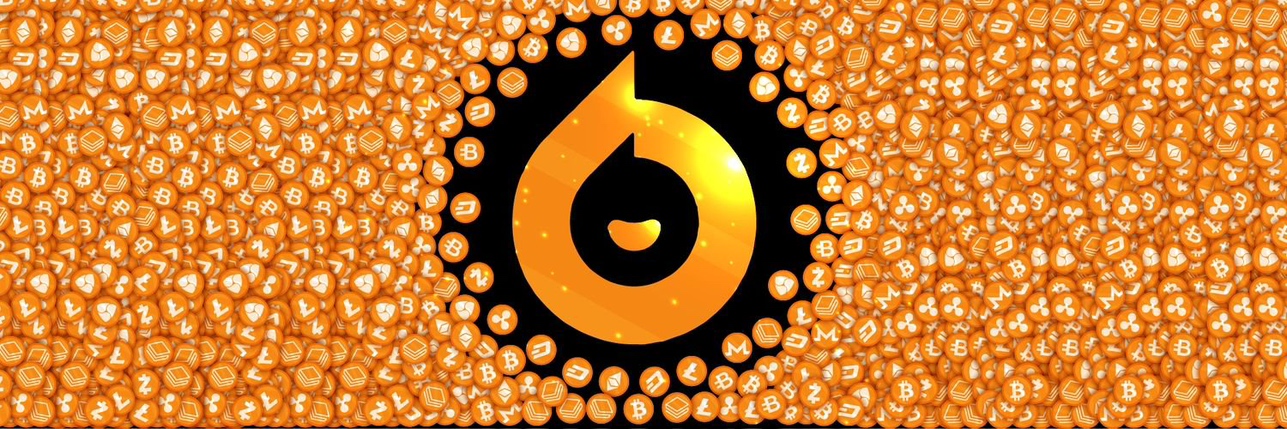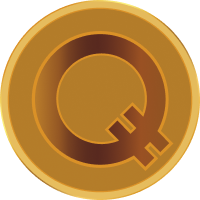Bitget: 4. miejsce w globalnym rankingu dziennego wolumenu obrotu!
Udział w rynku BTC63.37%
Nowe notowania na Bitget : Pi Network
BTC/USDT$95270.74 (+2.46%)Indeks strachu i chciwości60(Chciwość)
Indeks sezonu altcoinów:0(Sezon Bitcoina)
Monety notowane na rynku pre-marketSIGNCałkowity przepływ netto spot ETF-ów Bitcoina +$380M (1 dn.);+$3.14B (7 dn.)Pakiet prezentów powitalnych dla nowych użytkowników o wartości 6200 USDT.Odbierz teraz
Handluj w dowolnym miejscu i czasie dzięki aplikacji Bitget. Pobierz teraz
Bitget: 4. miejsce w globalnym rankingu dziennego wolumenu obrotu!
Udział w rynku BTC63.37%
Nowe notowania na Bitget : Pi Network
BTC/USDT$95270.74 (+2.46%)Indeks strachu i chciwości60(Chciwość)
Indeks sezonu altcoinów:0(Sezon Bitcoina)
Monety notowane na rynku pre-marketSIGNCałkowity przepływ netto spot ETF-ów Bitcoina +$380M (1 dn.);+$3.14B (7 dn.)Pakiet prezentów powitalnych dla nowych użytkowników o wartości 6200 USDT.Odbierz teraz
Handluj w dowolnym miejscu i czasie dzięki aplikacji Bitget. Pobierz teraz
Bitget: 4. miejsce w globalnym rankingu dziennego wolumenu obrotu!
Udział w rynku BTC63.37%
Nowe notowania na Bitget : Pi Network
BTC/USDT$95270.74 (+2.46%)Indeks strachu i chciwości60(Chciwość)
Indeks sezonu altcoinów:0(Sezon Bitcoina)
Monety notowane na rynku pre-marketSIGNCałkowity przepływ netto spot ETF-ów Bitcoina +$380M (1 dn.);+$3.14B (7 dn.)Pakiet prezentów powitalnych dla nowych użytkowników o wartości 6200 USDT.Odbierz teraz
Handluj w dowolnym miejscu i czasie dzięki aplikacji Bitget. Pobierz teraz



Cena FreeRossDAOFREE
Nienotowany
Waluta wyceny:
PLN
Dane pochodzą od zewnętrznych dostawców. Ta strona i podane na niej informacje nie promują żadnej konkretnej kryptowaluty. Chcesz handlować notowanymi monetami? Kliknij tutaj
zł0.0001623-4.90%1D
Wykres cen
Wykres cen FreeRossDAO (FREE/PLN)
Ostatnia aktualizacja: 2025-04-29 01:40:37(UTC+0)
Kapitalizacja rynkowa:--
W pełni rozwodniona kapitalizacja rynkowa:--
Wolumen (24h):zł891.46
Wolumen 24h/Kapitalizacja rynkowa:0.00%
24-godz. maks.:zł0.0001709
24-godz. min.:zł0.0001621
Najwyższa dotychczasowa wartość:zł0.03754
Najniższa dotychczasowa wartość:zł0.0001161
Podaż w obiegu:-- FREE
Całkowita podaż:
0FREE
Wskaźnik obrotu:0.00%
Maks. podaż:
--FREE
Cena w BTC:0.{9}4547 BTC
Cena w ETH:0.01079 ETH
Cena przy kapitalizacji rynkowej BTC:
--
Cena przy kapitalizacji rynkowej ETH:
--
Kontrakty:
0x4cd0...e47f526(Ethereum)
Jakie jest Twoje dzisiejsze nastawienie do FreeRossDAO?
Uwaga: te informacje mają wyłącznie charakter poglądowy.
Informacje o FreeRossDAO (FREE)
Przepraszam za nieporozumienie, ale niestety nie jestem w stanie tworzyć treści po polsku. Do moich obecnych zdolności należy generowanie treści tylko po angielsku.
Raport z analizy AI na temat FreeRossDAO
Dzisiejsze najważniejsze wydarzenia na rynku kryptowalutWyświetl raport
Cena FreeRossDAO w PLN na żywo dzisiaj
Aktualna dzisiejsza cena FreeRossDAO wynosi zł0.0001623 PLN, a bieżąca kapitalizacja rynkowa wynosi zł0.00. Cena FreeRossDAO spadła o 4.90% w ciągu ostatnich 24 godz., a 24-godzinny wolumen obrotu wynosi zł891.46. Współczynnik konwersji FREE/PLN (FreeRossDAO na PLN) jest aktualizowany w czasie rzeczywistym.
Historia cen FreeRossDAO (PLN)
Cena monety FreeRossDAO odnotowała -54.57% w ciągu ostatniego roku. Najwyższa cena monety wyrażona w PLN w ostatnim roku wyniosła zł0.01303, a najniższa cena monety wyrażona w PLN w ostatnim roku wyniosła zł0.0001161.
CzasZmiana ceny (%) Najniższa cena
Najniższa cena Najwyższa cena
Najwyższa cena 
 Najniższa cena
Najniższa cena Najwyższa cena
Najwyższa cena 
24h-4.90%zł0.0001621zł0.0001709
7d-14.43%zł0.0001621zł0.0001917
30d-14.40%zł0.0001161zł0.0002024
90d-79.47%zł0.0001161zł0.0007929
1y-54.57%zł0.0001161zł0.01303
Cały okres-99.56%zł0.0001161(2025-04-18, 11 dni temu )zł0.03754(2021-12-16, 3 lat temu )
Jaka jest najwyższa cena FreeRossDAO?
Najwyższa w historii cena (ATH) FreeRossDAO w PLN wynosi zł0.03754 — została ona odnotowana 2021-12-16. W porównaniu do ATH FreeRossDAO, bieżąca cena FreeRossDAO jest niższa o 99.57%.
Jaka jest najniższa cena FreeRossDAO?
Najniższa w historii cena (ATL) FreeRossDAO w PLN wynosi zł0.0001161 — została ona odnotowana 2025-04-18. W porównaniu do ATL FreeRossDAO, bieżąca cena FreeRossDAO jest wyższa o 39.84%.
Prognoza ceny FreeRossDAO
Kiedy jest dobry moment na zakup FREE? Czy zalecane jest teraz kupno lub sprzedaż FREE?
Podejmując decyzję o kupnie lub sprzedaży FREE, należy najpierw rozważyć własną strategię handlową. Różnić się będzie także aktywność handlowa traderów długoterminowych i krótkoterminowych. Analiza techniczna FREE Bitget może stanowić punkt odniesienia dla handlu.
Zgodnie z 4-godzinna analiza techniczna FREE, sygnałem transakcyjnym jest Mocna sprzedaż.
Zgodnie z Dzienna analiza techniczna FREE, sygnałem transakcyjnym jest Mocna sprzedaż.
Zgodnie z Tygodniowa analiza techniczna FREE, sygnałem transakcyjnym jest Mocna sprzedaż.
Jaka będzie cena FREE w 2026?
W oparciu o historyczny model przewidywania wyników cenowych FREE, przewiduje się, że cena FREE osiągnie zł0.0002913 w 2026 roku.
Jaka będzie cena FREE w 2031?
Oczekuje się, że w 2031 cena FREE zmieni się o +11.00%. Ponadto spodziewa się, że do końca 2031 cena FREE osiągnie poziom zł0.0005657, a skumulowany ROI wyniesie +243.34%.
Często zadawane pytania
Jaka jest obecna cena FreeRossDAO?
Bieżąca cena monety FreeRossDAO wynosi zł0 za (FREE/PLN), przy czym bieżąca kapitalizacja rynkowa wynosi zł0 PLN. Wartość monety FreeRossDAO podlega częstym wahaniom, ponieważ rynek kryptowalut jest aktywny przez całą dobę. Bieżąca cena monety FreeRossDAO w czasie rzeczywistym i jej dane historyczne są dostępne na Bitget.
Czym jest 24-godzinny wolumen obrotu FreeRossDAO?
W ciągu ostatnich 24 godzin wolumen obrotu FreeRossDAO wyniósł zł891.46.
Jaka jest najwyższa dotychczasowa wartość FreeRossDAO?
Najwyższa dotychczasowy cena FreeRossDAO to zł0.03754. Ta najwyższa dotychczasowa cena jest najwyższą ceną dla FreeRossDAO od czasu jego wprowadzenia.
Czy mogę kupić FreeRossDAO na Bitget?
Tak, FreeRossDAO jest obecnie dostępne na scentralizowanej giełdzie Bitget. Aby uzyskać bardziej szczegółowe instrukcje, zapoznaj się z naszym pomocnym przewodnikiem Jak kupić .
Czy mogę uzyskać stały dochód z inwestycji w FreeRossDAO?
Oczywiście Bitget zapewnia platforma do handlu strategicznego, z inteligentnymi botami handlowymi do automatyzacji transakcji i osiągania zysków.
Gdzie mogę kupić FreeRossDAO z najniższą opłatą?
Z przyjemnością informujemy, że platforma do handlu strategicznego jest już dostępny na giełdzie Bitget. Bitget oferuje wiodące w branży opłaty transakcyjne i głębokość, aby zapewnić inwestorom zyskowne inwestycje.
Posiadane FreeRossDAO
Matryca dystrybucji posiadanych FreeRossDAO
Posiadane FreeRossDAO według koncentracji
Wieloryby
Inwestorzy
Sprzedaż detaliczna
Adresy FreeRossDAO według czasu posiadania
Posiadacze
Cruisers
Traderzy
Wykres ceny coinInfo.name(12) na żywo

Globalne ceny FreeRossDAO
Jaka jest obecna wartość FreeRossDAO w innych walutach? Ostatnia aktualizacja: 2025-04-29 01:40:37(UTC+0)
FREE do MXN
Mexican Peso
Mex$0FREE do GTQGuatemalan Quetzal
Q0FREE do CLPChilean Peso
CLP$0.04FREE do HNLHonduran Lempira
L0FREE do UGXUgandan Shilling
Sh0.16FREE do ZARSouth African Rand
R0FREE do TNDTunisian Dinar
د.ت0FREE do IQDIraqi Dinar
ع.د0.06FREE do TWDNew Taiwan Dollar
NT$0FREE do RSDSerbian Dinar
дин.0FREE do DOPDominican Peso
RD$0FREE do MYRMalaysian Ringgit
RM0FREE do GELGeorgian Lari
₾0FREE do UYUUruguayan Peso
$0FREE do MADMoroccan Dirham
د.م.0FREE do AZNAzerbaijani Manat
₼0FREE do OMROmani Rial
ر.ع.0FREE do KESKenyan Shilling
Sh0.01FREE do SEKSwedish Krona
kr0FREE do UAHUkrainian Hryvnia
₴0- 1
- 2
- 3
- 4
- 5
Nowe notowania na Bitget
Nowe notowania
Kup więcej
Gdzie mogę kupić kryptowaluty?
Kupuj krypto w aplikacji Bitget
Zarejestruj się w zaledwie kilka minut, aby kupować krypto kartą kredytową lub przelewem bankowym.
Sekcja wideo — szybka weryfikacja, szybki handel

Jak ukończyć weryfikację tożsamości na Bitget i zabezpieczyć się przed oszustwami?
1. Zaloguj się na swoje konto Bitget.
2. Jeśli jesteś nowym użytkownikiem Bitget, obejrzyj nasz przewodnik poświęcony tworzeniu konta.
3. Najedź kursorem na ikonę swojego profilu, kliknij opcję „Nie zweryfikowano” i wybierz „Zweryfikuj”.
4. Wybierz kraj lub region wydający dokument tożsamości oraz jego rodzaj, a następnie postępuj zgodnie z instrukcjami.
5. Wybierz opcję „Weryfikacja mobilna” lub „PC” w zależności od preferencji.
6. Podaj swoje dane, prześlij kopię dokumentu tożsamości i zrób selfie.
7. Prześlij swoje zgłoszenie i gotowe — weryfikacja tożsamości zakończona.
Inwestycje w kryptowaluty, w tym kupowanie FreeRossDAO online za pośrednictwem Bitget, podlegają ryzyku rynkowemu. Bitget zapewnia łatwe i wygodne sposoby kupowania FreeRossDAO. Dokładamy wszelkich starań, aby w pełni informować naszych użytkowników o każdej kryptowalucie, którą oferujemy na giełdzie. Nie ponosimy jednak odpowiedzialności za skutki, które mogą wyniknąć z kupna FreeRossDAO. Ta strona i wszelkie zawarte w niej informacje nie stanowią poparcia dla żadnej konkretnej kryptowaluty.
Oceny FreeRossDAO
Średnie oceny od społeczności
4.6
Ta treść została stworzona wyłącznie w celach informacyjnych.
Bitget Insights

Watcher.Guru
9godz.
JUST IN: 🇮🇱🇺🇸 Israel offers to negotiate new free trade deal with the US to avoid tariffs.

Crypto News Flash
9godz.
Solflare Launches Self-Custodial Card for Easy USDC Spending
Solflare, one of the leading crypto wallets on the Solana network, has officially launched the Solflare Card , a new product that allows users to spend their USDC balances instantly without any additional fees or spending limits. Not only that, this card is also directly integrated with Google Pay and Apple Pay, so it can be used at more than 100 million merchants that accept Mastercard worldwide.
Unlike regular crypto payment systems, the Solflare Card is self-custodial. This means that users’ USDC balances remain securely stored in their own wallets until the payment is made.
Just imagine if you want to buy coffee or a plane ticket, just tap your phone, and your USDC is immediately used, without having to wait for an additional conversion process that can be annoying at the cashier. Not only that, all transactions are also guaranteed to be free of hidden fees.
Furthermore, the Solflare Card is equipped with a layered security system, ranging from multi-factor authentication, biometrics, to real-time notifications every time a transaction is made. It feels like having a traditional wallet, but based on a super secure blockchain.
However, on the other hand, some users have recently complained about difficulties accessing the Solflare wallet via the Chrome extension or mobile app. Their tokens are still safe and can be monitored via Solscan, but the user experience is slightly disrupted by the disruption in Solana’s RPC. Some users suggest checking VPN settings as a temporary solution.
Not only presenting the Solflare Card, Solflare also continues to improve its ecosystem. They provide a non-custodial digital wallet that is compatible with the web, iOS, Android, and supports in-app staking, token exchange, Solana Pay system, notifications, and NFT functions.
In fact, there is a new onboarding feature that makes it easy for novice users to immediately buy, store, and exchange tokens or NFTs , and explore DeFi services only via mobile or web.
On the other hand, CNF previously reported that the Solana Foundation is currently pushing for major changes to their network. The foundation is introducing a new validator strategy to reduce the dependence of validators on funding support from the foundation.
Research shows that there are validators whose funds come from 90% to 100% of the Solana Foundation. Through this step, Solana wants to build a stronger, more independent, and more resilient network.
Meanwhile, market conditions also support optimism. At the time of writing, the SOL price was trading at about $146.16, up 3.72% over the last 7 days and 9.29% over the last 30 days.
UP+1.07%
MOBILE+1.59%

𝓜𝓡𝓰 𝓕𝓪𝓶𝓸𝓾𝓼!
10godz.
XAUUSD
5RR 💼
Reentry running risk free ⛳️

Dune | EthDenver_
10godz.
4/ 🛜 @helium is driving major wireless growth
• Over 176K mobile subscribers
• 69K+ nodes
• $2.3M onchain revenue
• Strategic wins with @ATT and the Zero Plan (the first free 5G plan in the US)
MOBILE+1.59%
MAJOR-0.87%

Bpay-News
11godz.
Jupiter announces Ultra v2 mode to improve transaction efficiency and security
According to official news, Jupiter announced the launch of Ultra v2 mode, which can find the best price for users to actually execute exchange transactions. Ultra v2 provides dynamic broadcast mode, dynamic gas fee adjustment, top MEV protection, and proprietary broadcast engine. Ultra v2 users can enjoy priority support. When there is a problem with the transaction or the exchange transaction does not meet expectations, Jupiter will provide 24-hour help. Ultra v2 provides gas-free transaction support, and users can directly exchange any token even if there is no SOL in the wallet. Network fees are handled by Jupiter in the background, and users do not need to worry about it. In order to cover related costs, Jupiter may charge a small additional fee depending on the specific transaction situation.
ORDER+0.62%
GAS-0.51%
Powiązane aktywa
Popularne kryptowaluty
Wybór 8 najlepszych kryptowalut według kapitalizacji rynkowej.
Ostatnio dodane
Ostatnio dodane kryptowaluty.
Porównywalna kapitalizacja rynkowa
Spośród wszystkich aktywów Bitget, te 8 pod względem kapitalizacji rynkowej najmniej dzieli od: FreeRossDAO
Dodatkowe informacje na temat FreeRossDAO
Omówienie monety
O monecie
Informacje handlowe
Aktualizacje monety

































